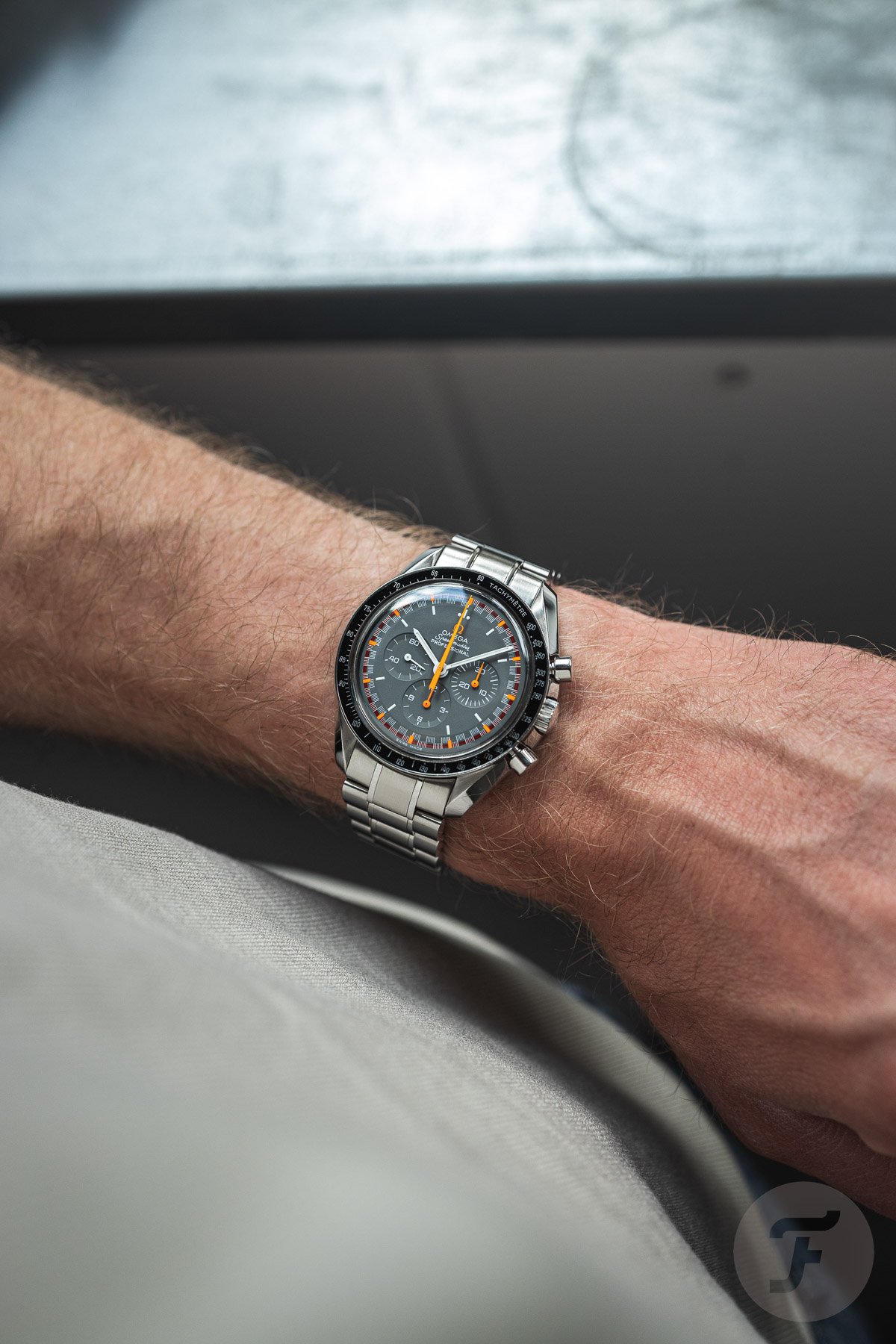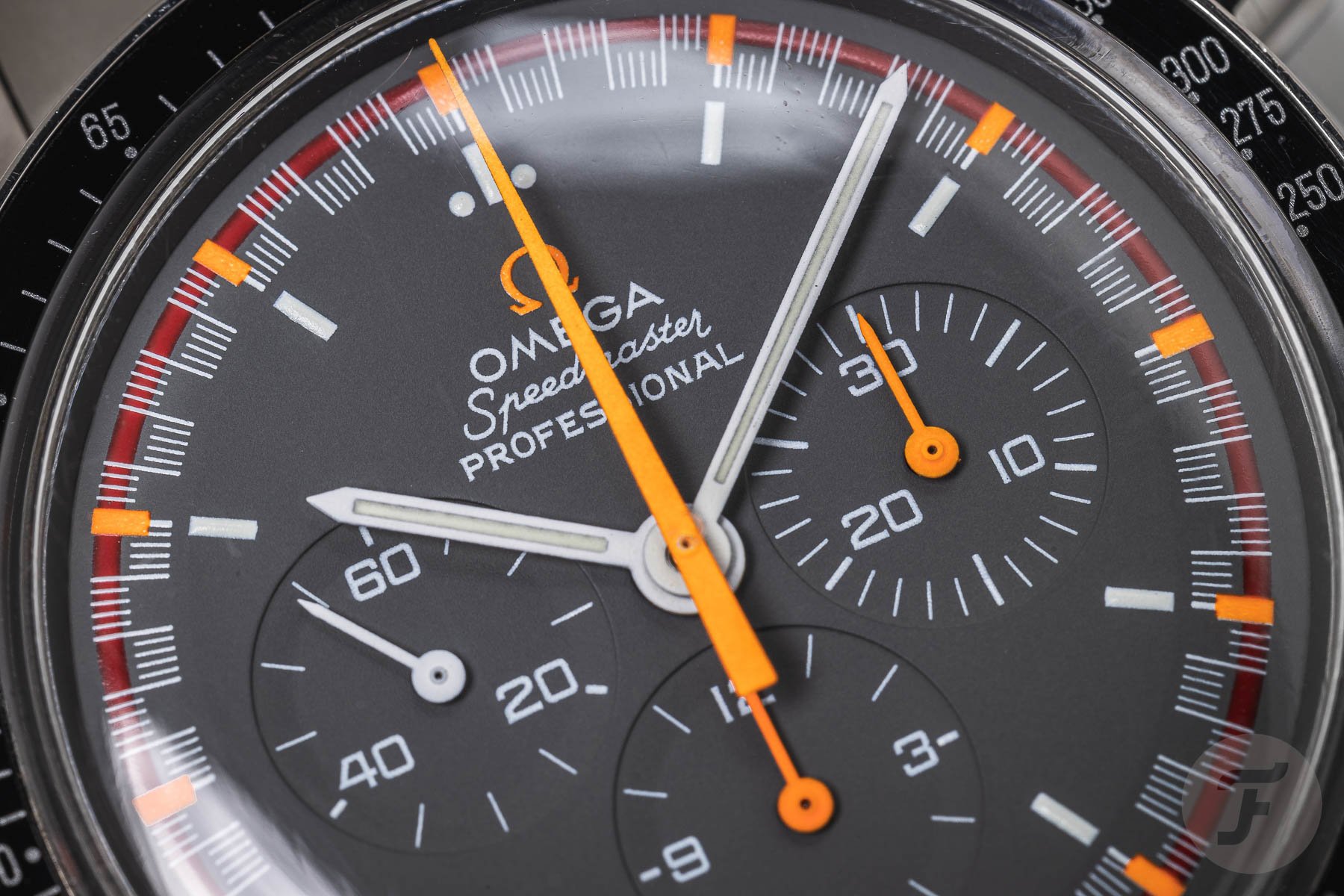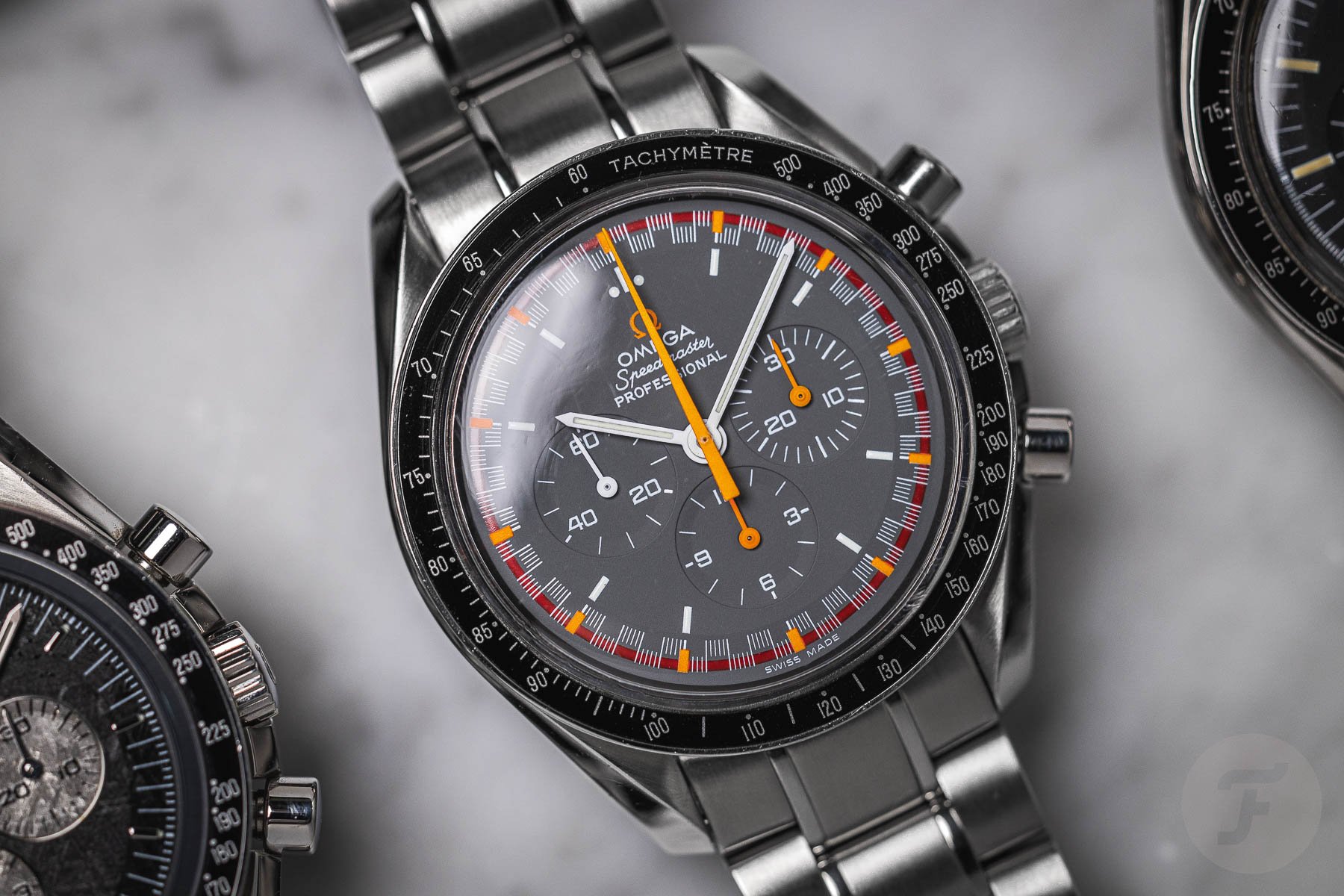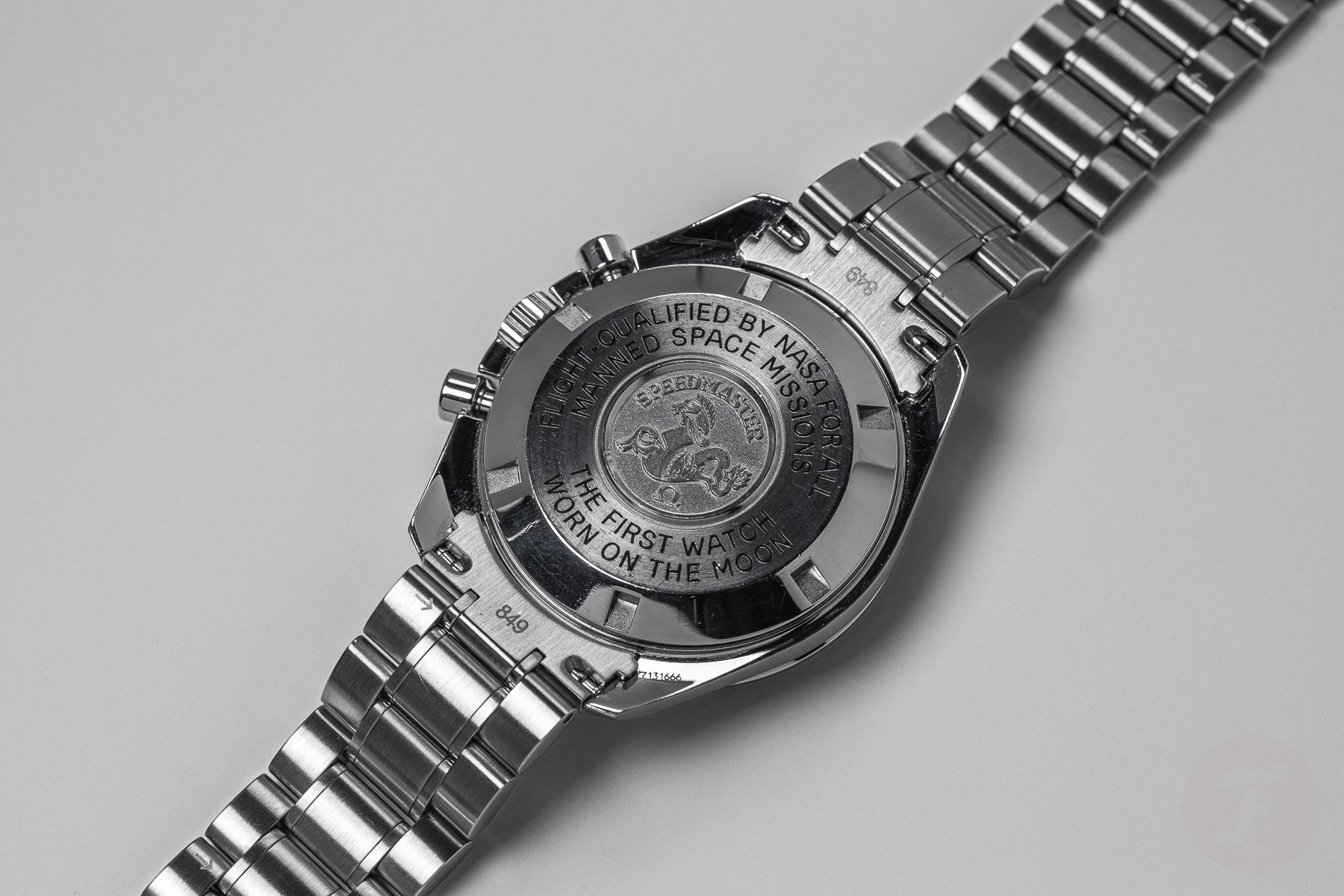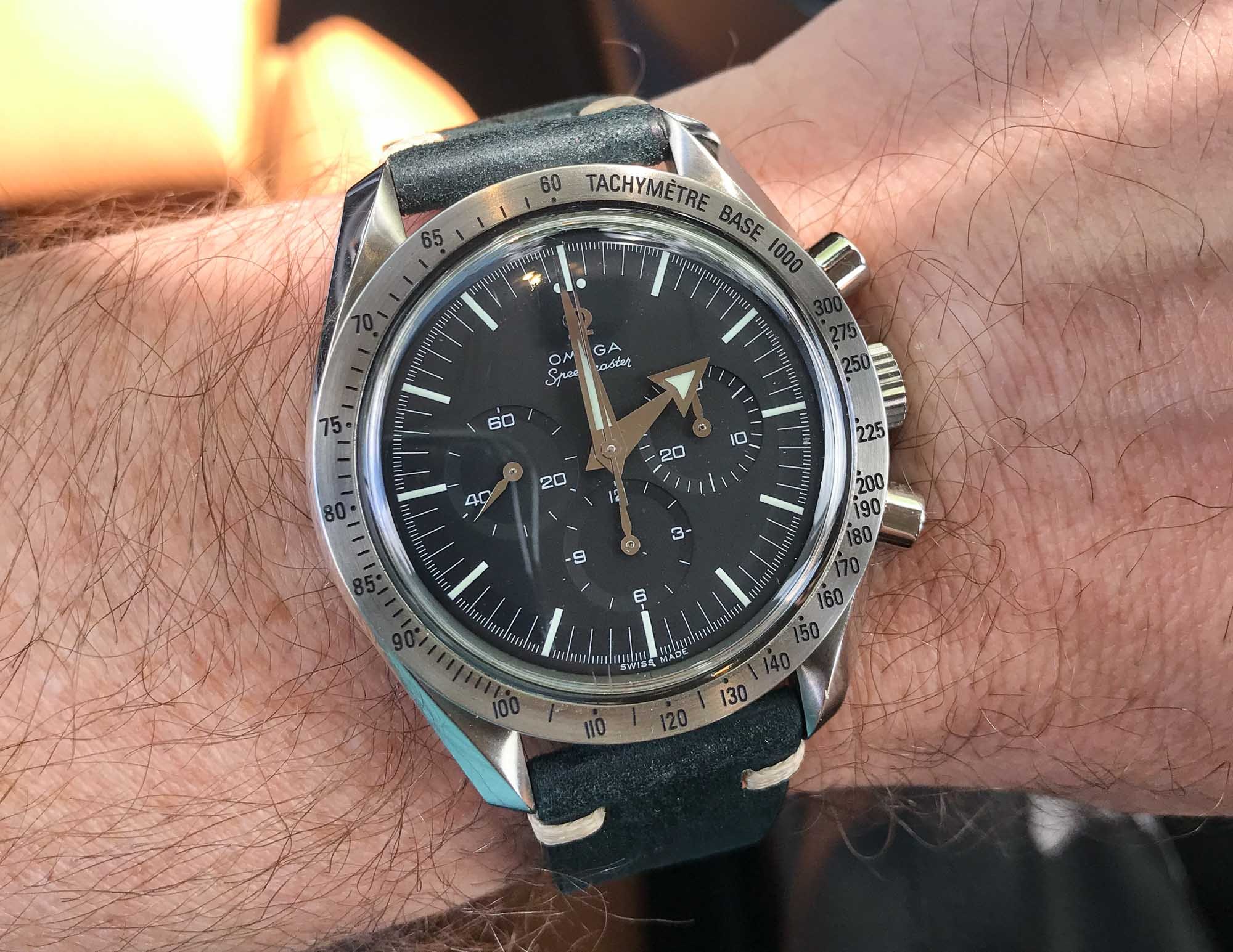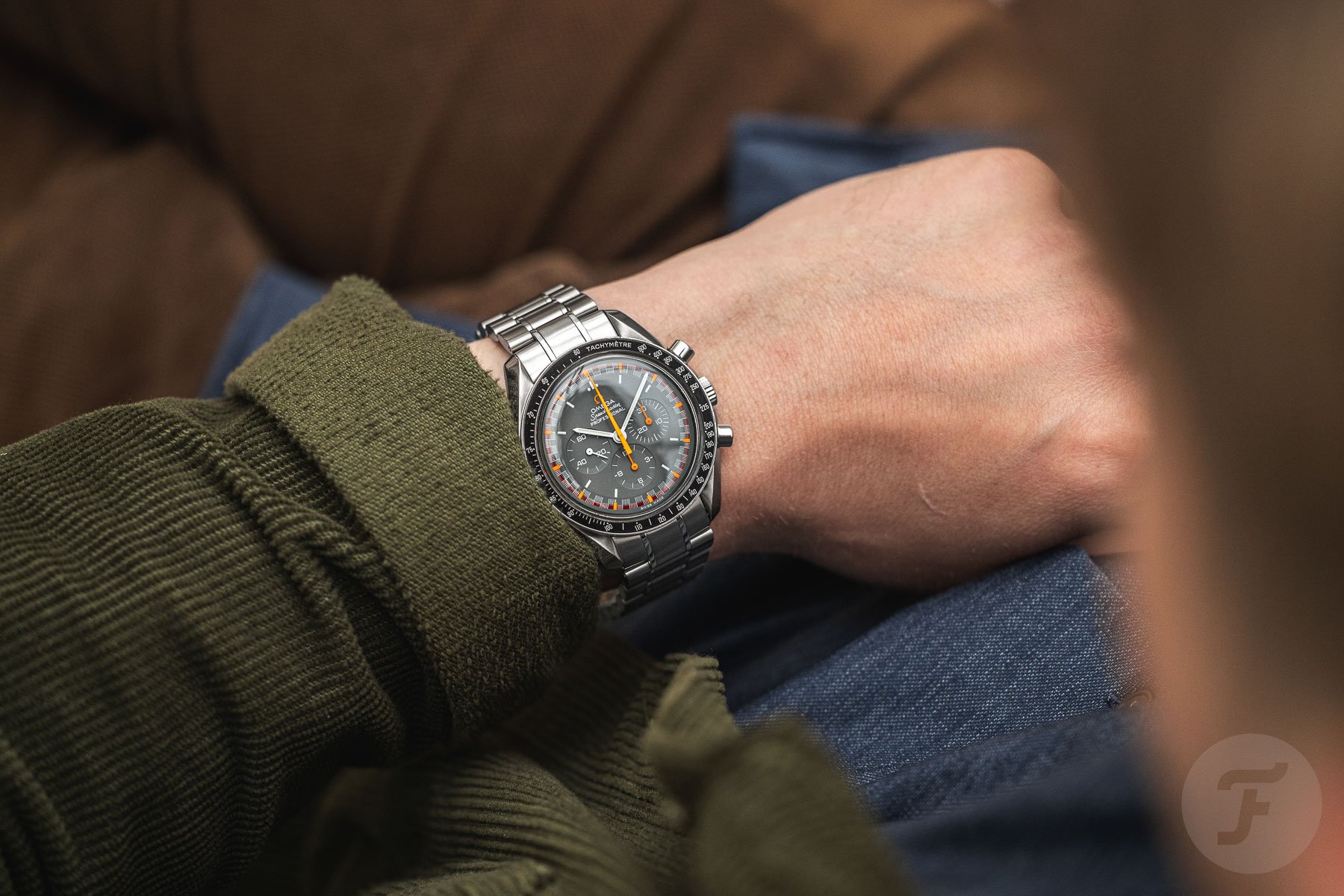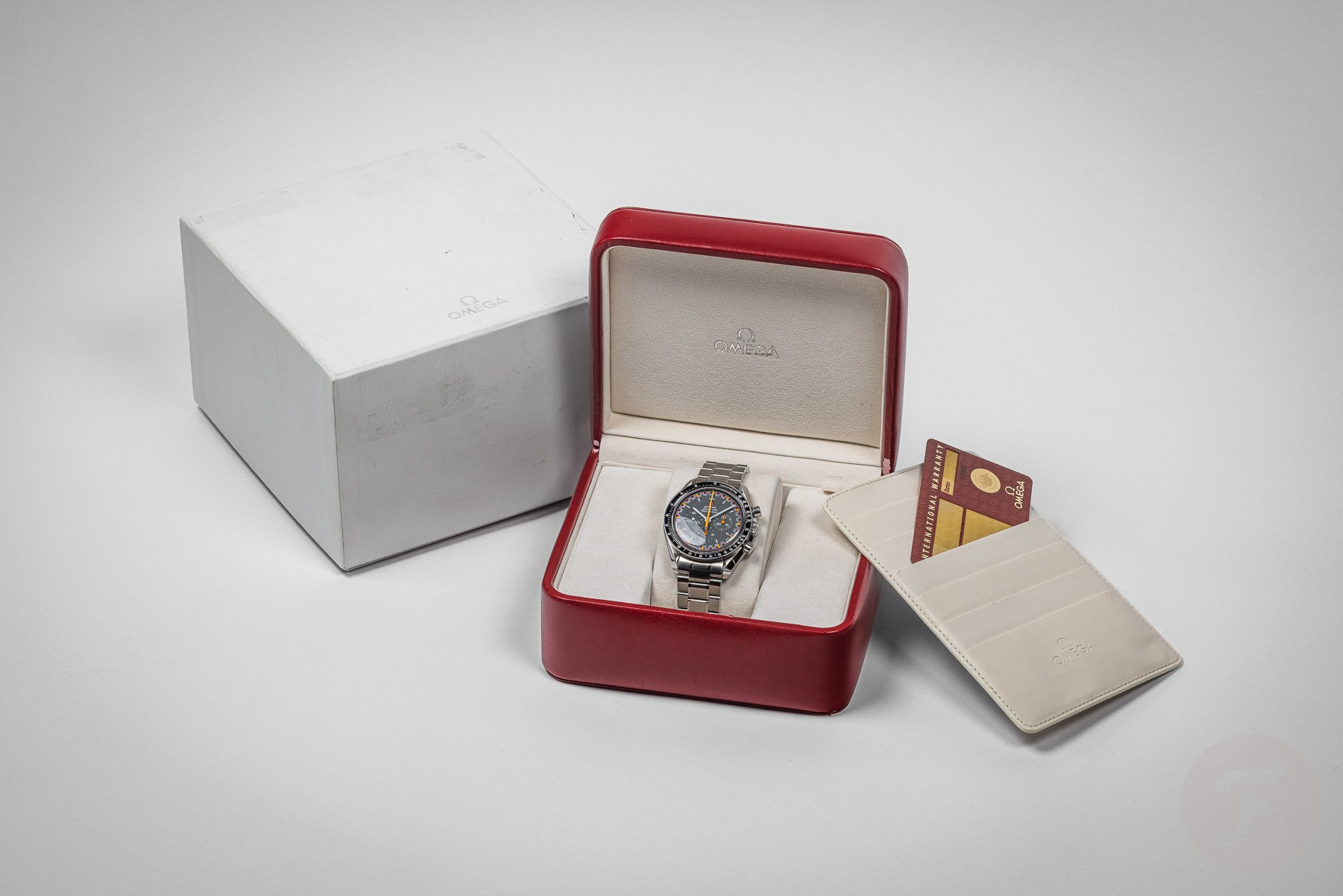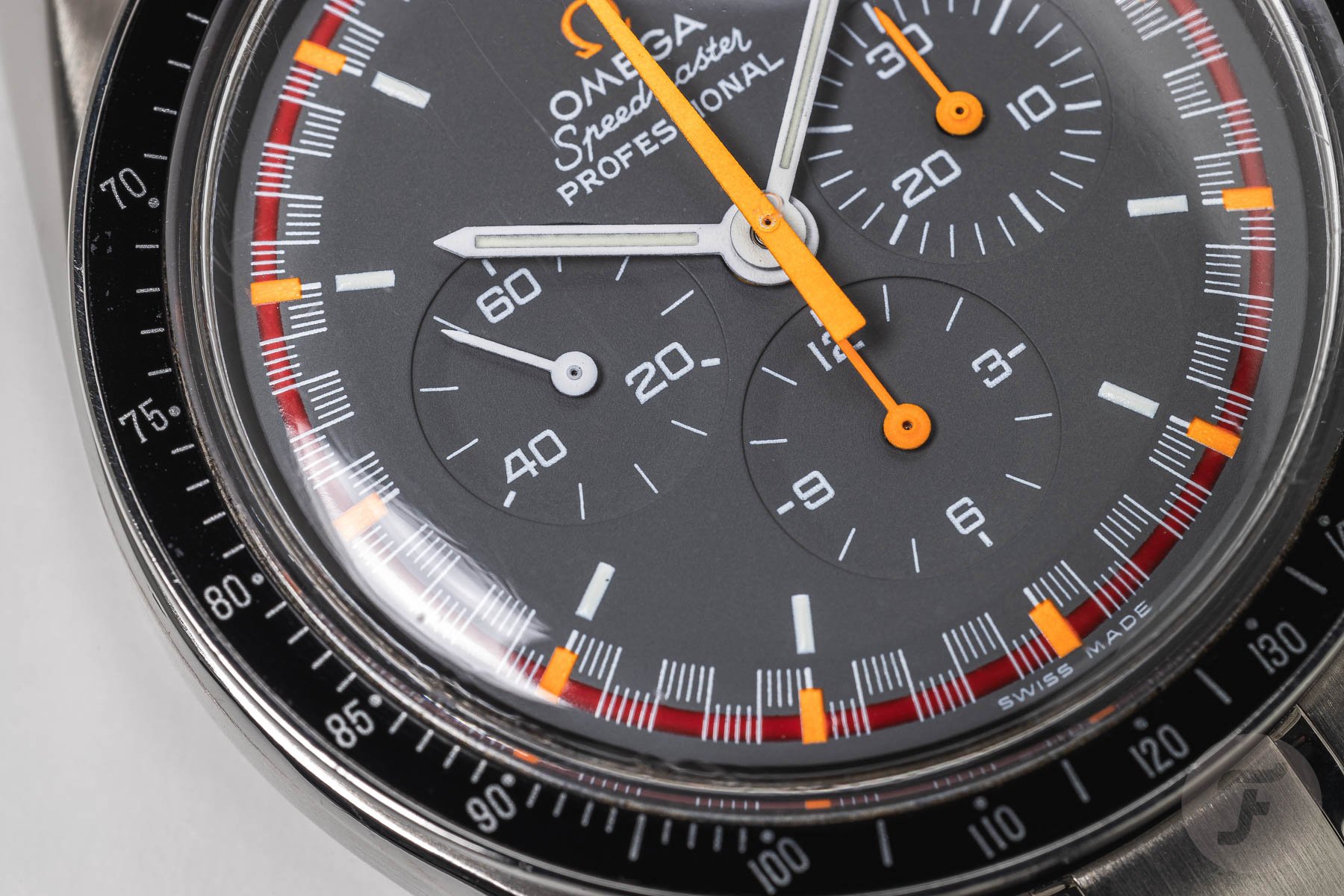The Omega Speedmaster Japan Racing — It Has Been 20 Years
Two decades ago, Omega reintroduced the racing dial to the Speedmaster Professional. It was only for the Japanese market, and only 2,004 pieces were produced. As you might know, there are more of them around, but we’ll get to that later.
Speedmaster Japan Racing 3570.40
First, let’s go back 20 years. At that time, Omega was producing limited editions of the Speedmaster Professional Moonwatch, something that the brand stopped in 2019. One of the most coveted editions among them is this Japan Racing edition. As the name suggests, it was exclusive to Japan as the Speedmaster had (and still has) a massive following there. It wasn’t the first limited edition for the Japanese market, and it was certainly not the last (which was in 2018, for the Tokyo 2020 Games).
The history of the racing dial
Omega began using racing dials — featuring orange/red and white markings reminiscent of the curb stones on racetracks — in the Speedmaster collection in the 1960s. According to Moonwatch Only, there are a few known examples in the 105.012 and 145.012 references with white and red printing from 1968 and several examples of the 145.022 with white, orange, and red markings from 1970. Whereas the 1968 models had white hands for the chronograph, in the 1970 version, those hands were orange. The latter looks very close to the re-edition dial in the Japan Racing model from 2004. Then, there was the 1970 Omega Speedmaster Mark II ref. 145.014 with a racing dial.
There were several Speedmasters outside of the “Professional” collection that also used racing dials. You can find them among the (smaller) automatic-movement-powered models. Later, Omega also introduced a racing dial to the 44.25mm two-register models.
Only the dial is different
Anyway, the Omega Speedmaster Professional Japan Racing reference 3570.40 was based on the standard Moonwatch reference 3570.50 with caliber 1861. Instead of the regular black Speedmaster dial with white printing, it came with the racing dial in a dark gray color with a red ring, orange markers, and a double row of markers for the seconds in white.
The rest of the watch is identical to the regular Speedmaster Professional of that time (3570.50), including the ref. 1998 bracelet, caliber 1861, and standard Moonwatch case back with the famous “Flight-Qualified by NASA” engraving. At the time, the boxes were also the standard ones (either red leather or, if the customer was lucky, wood).
Another Speedmaster from the same era has a grayish dial. It’s the Speedmaster ’57 Replica or Relaunch edition that Omega produced between 1997 and 2003. However, with its all-white printing, that dial was closer to the look of the standard Speedmaster dial.
Widely available spare parts resulted in Frankenwatches
Omega produced just 2,004 examples of the Speedmaster Japan Racing ref. 3570.40. There are, however, more floating around on the market. This is because Omega would deliver the dial and hands as spare parts to Omega service centers and watchmakers who could order them (at the time). As a result, some people had their standard Speedmasters modified, which also happened with dial and hands from the famous Mitsukoshi edition (ref. 3570.31). Unfortunately, since only the dial and hands are different from the standard 3570.50 Moonwatch, it is difficult to distinguish an original from a “Frankenwatch” version.
A slow start
In 2004, the demand for these special editions was nowhere near what it is today. As I’ve written before, the first Speedmaster Silver Snoopy Award (2003) was in the jewelers’ windows for several years, and even the Alaska Project (2008) didn’t do well initially. Well, that changed significantly in the past decade, and the prices have increased tremendously for discontinued limited editions. Even though 2,004 sounds like a lot of pieces, remember that this is only about a day’s worth of production at Omega in Switzerland.
The market is softening on these editions
Recently, we’ve seen the market soften a bit for some of the special- and limited-edition watches, including the Japan Racing. You can find them below €10,000 these days, but remember that, depending on your country, the VAT and import duties can easily add up to another 25% of the value to the price. That said, with the ever-rising prices of new watches, including those from Omega, the pre-owned and discontinued editions with (slightly) softening prices are getting more interesting to purchase again.
Also, ensure that the one you’re after is an original Japan Racing model and not a Frankenwatch. The warranty card should have both the printed reference number and a serial number matching that of the watch. If the watch doesn’t come with the warranty card, these numbers should be mentioned on the original invoice or an Extract of the Archives.

